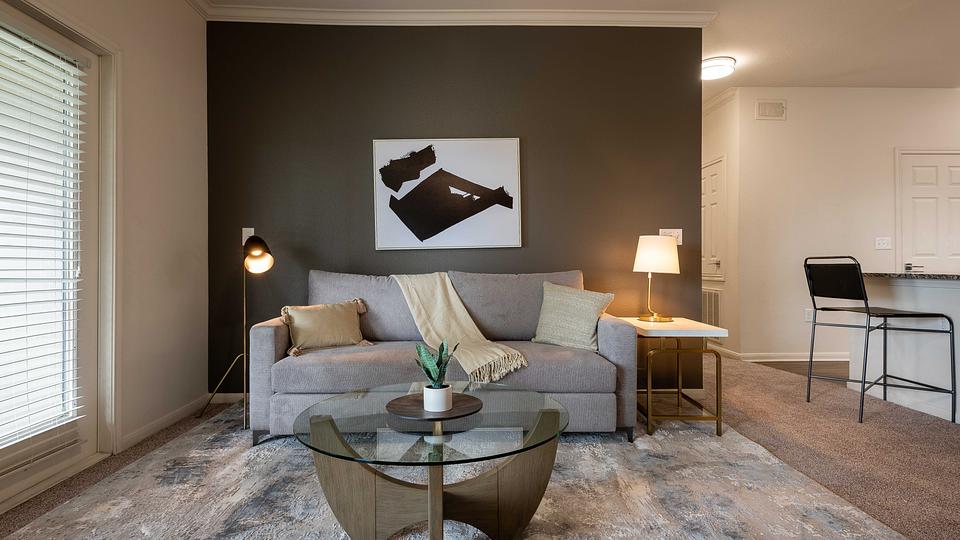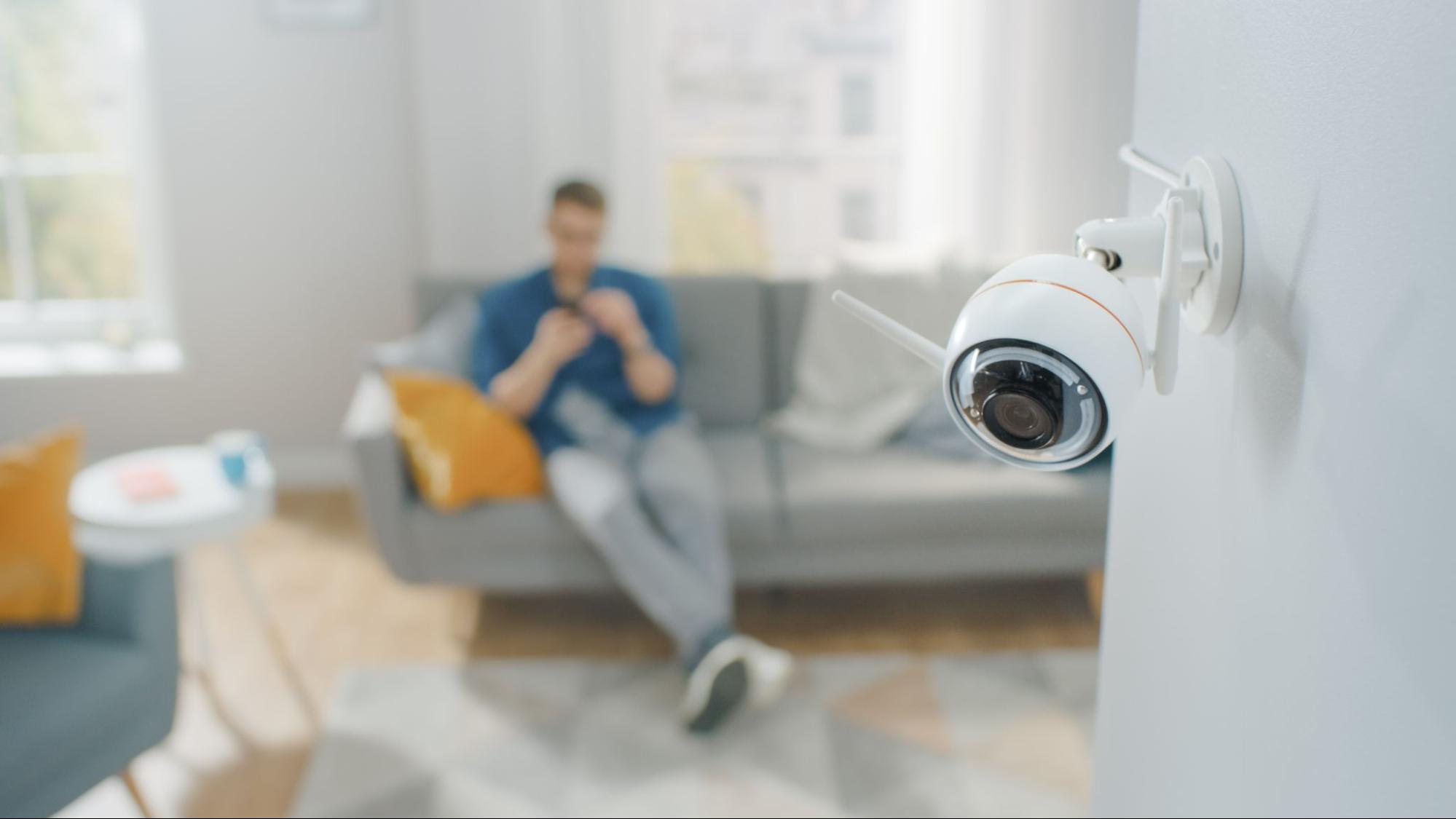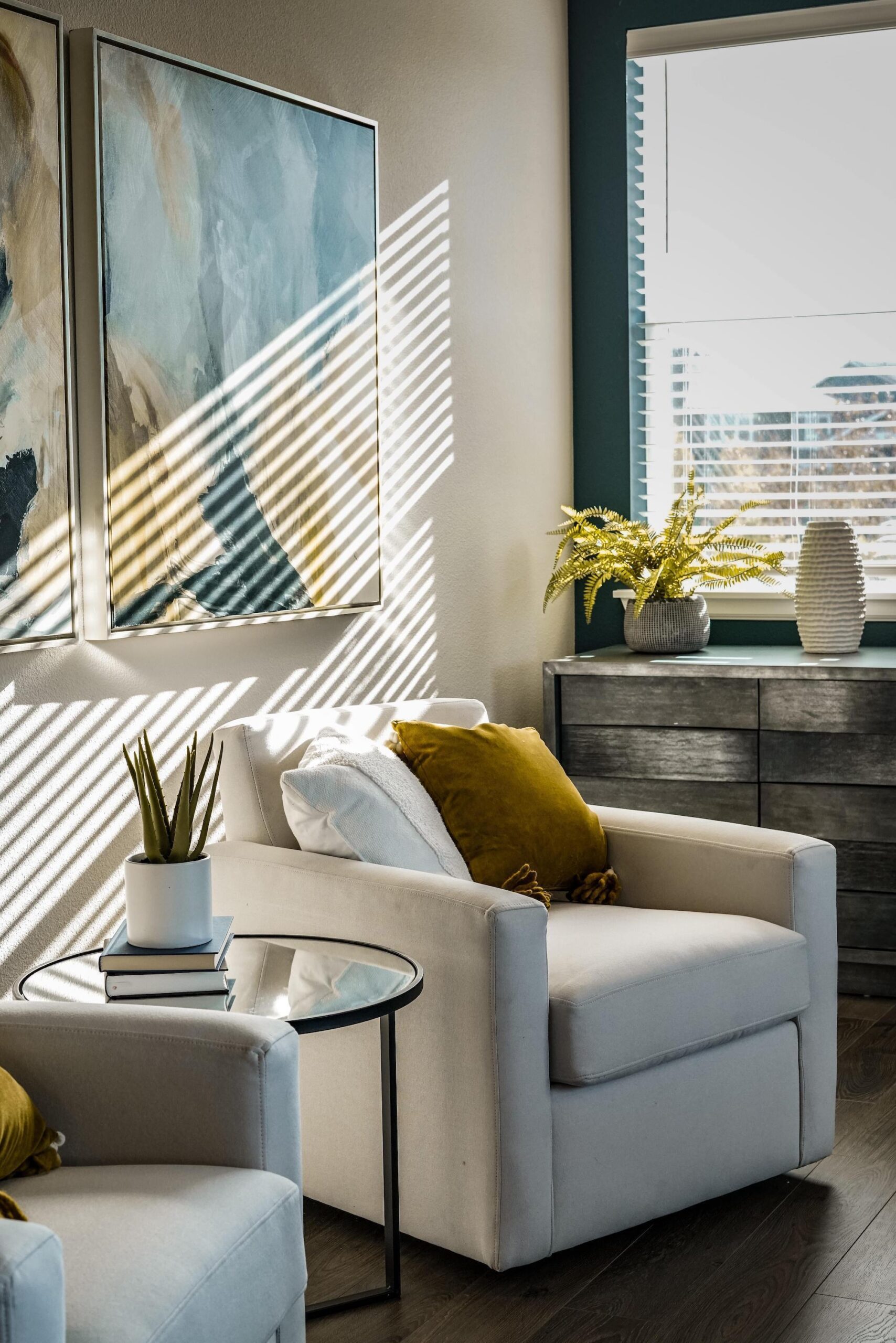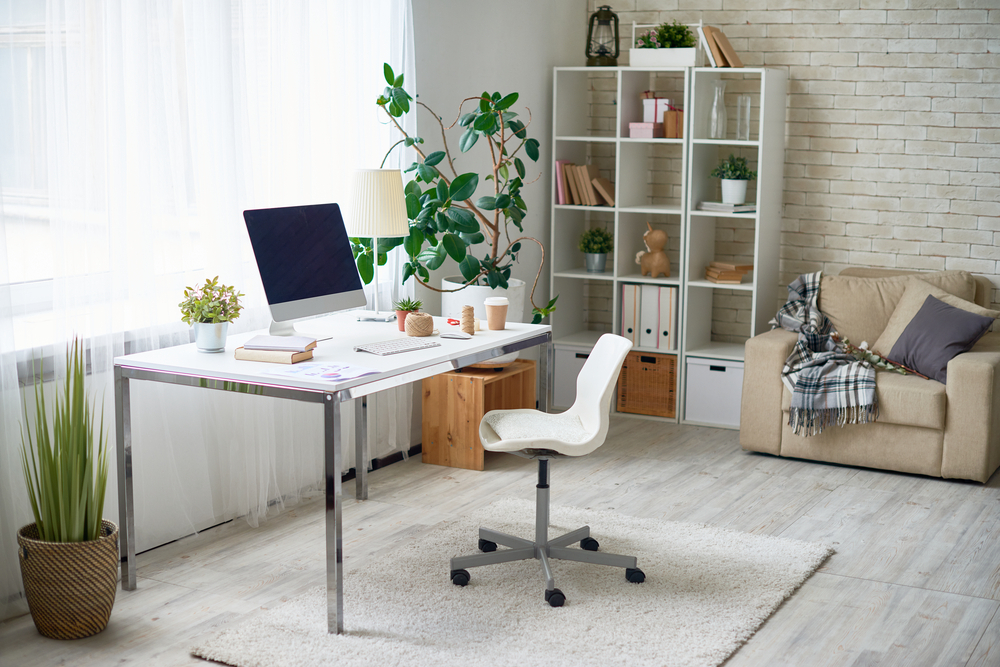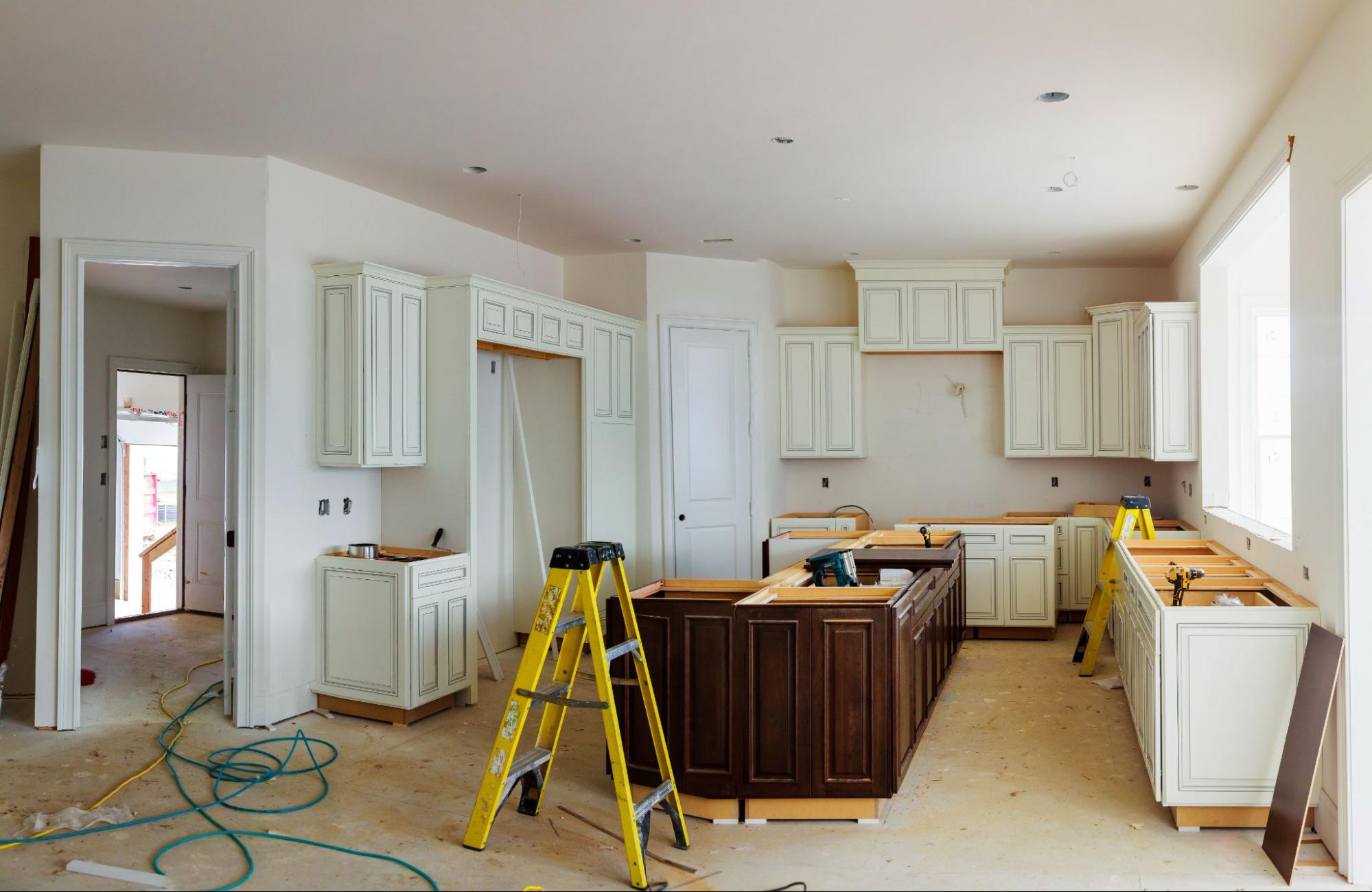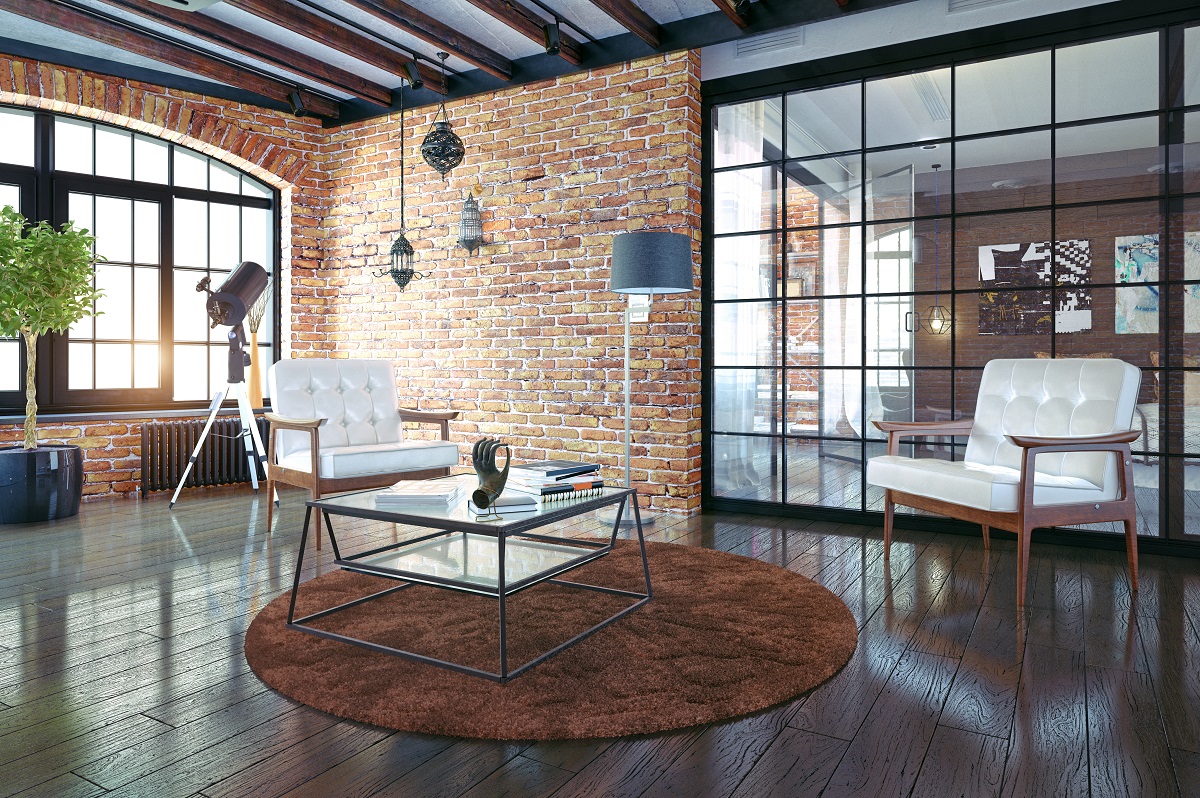
How to Soundproof an Apartment: 16 Proven Tips for Renters
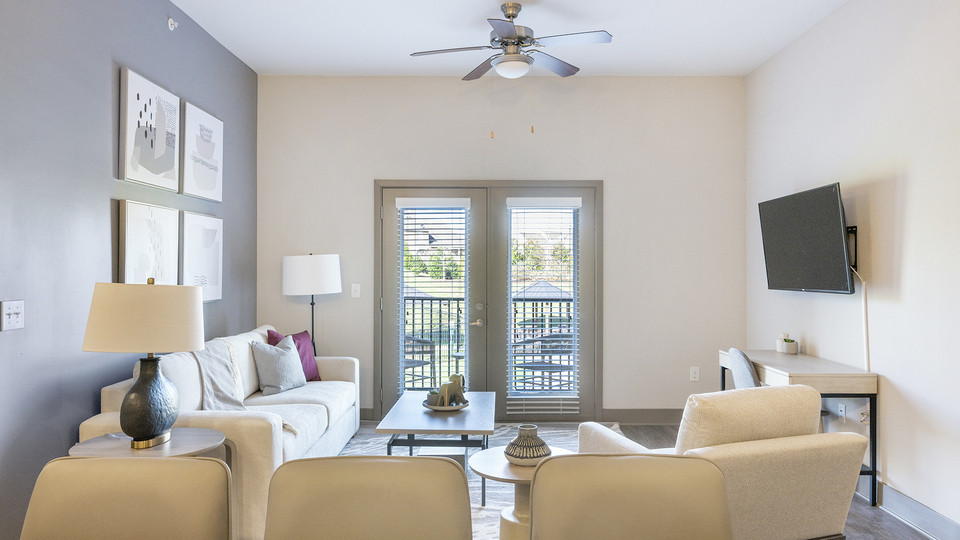
Noisy neighbors, drafts, and traffic can get in the way of a peaceful home. Here’s how to soundproof an apartment with 16 renter-friendly methods.
There’s no shortage of reasons to choose apartment life. Smaller spaces mean less cleaning time, fewer responsibilities for maintenance and repairs, and apartment amenities that make life more convenient — hello, in-house gyms and stocked laundry facilities.
But there’s a catch to community living. And sometimes, it’s a loud one. Whether it’s the neighbor’s footsteps upstairs or a bedroom window facing the street, unwanted noises can turn your apartment oasis into a bad soundtrack played on a loop.
You don’t have to break your lease (and lose your security deposit) because of noisy neighbors. There are plenty of renter-friendly soundproofing strategies to reduce noise and insulate your space from unwanted acoustics.
Grab a notebook and a pair of earplugs. This is how to soundproof an apartment to keep the peace, even when your neighbor decides that Tuesday night is the perfect moment for a jam session.
Is a Soundproof Apartment Really Possible?
Building a soundproof apartment is possible, although it requires realistic expectations. Nearly all buildings experience a little noise pollution from the surrounding area. But apartment soundproofing isn’t as big a dream as that waterfront property you favorited on Zillow. With a little know-how and site-specific soundproof materials, you can reduce or eliminate noise.
First, you must understand how sound works. Sound travels like water. It squeezes through the smallest openings and bounces off hard surfaces. Soundproofing a room for better acoustics starts by identifying where the sound comes from — through a thin wall, ceiling, or tiny opening in the window. You can choose the right soundproof material and method once you identify the noise and its source (like the murmur of foot traffic through the crack under the front door). If the noise is coming from “the entire apartment downstairs where they blast music all night,” don’t worry — there are tips for that, too.
Apartment Soundproofing Basics: Assess Your Weak Spots
Some noises are clear as day, like an upstairs neighbor who drags their feet. Others are harder to identify, like the hum of an electrical appliance or the subtle whir of traffic. Here are some common weak spots to check:
- Windows and doors: These are often the prime culprits for letting in external noises, including traffic, construction, and outside conversations. Check for gaps or damaged soundproof insulation on windows and doors that open to the property’s exterior.
- Walls, floors, and ceilings: Thin materials or poor soundproof insulation can easily transmit sounds from neighboring apartments, including voices and sound systems. A hollow sound when you tap on a wall, vibrations, or clearly hearing conversations indicate a lack of sound-dampening insulation.
- Vents and electrical outlets: Vents, electrical outlets, and other installations can spread noise freely between bedrooms and apartments. Whistling, whooshing, and muffled vibrations may be traveling through the ductwork, raising the acoustical levels in your room.
Even if you use a renter-friendly solution, it’s a good idea to figure out how to soundproof a room in an apartment with your landlord or superintendent. The noise might result from a recent repair or remodel that needs more attention, like an HVAC installation that wasn’t properly insulated. They may be willing to help with costs (after all, it improves their property’s value) or help remedy the situation with a noisy neighbor.

16 Tips To Soundproof a Room
After you identify the source of noisy sound waves, here are our go-to methods to reduce noise and create a quiet apartment oasis.
Best Soundproofing for Walls and Ceilings
Figuring out how to reduce noise through walls and ceilings can be decorative and functional, including stocking your bookshelf and hanging upholstery panels. Here are some strategies that are a win-win for beautifying the acoustical and aesthetic quality of your rooms:
- Insulate with acoustic panels: Acoustic panels come in several materials, including fiberglass, wood, and recycled textiles. Panels with lightweight fabrics are popular because they hang like a picture frame. Plus, they come in decorative patterns, making interior design for non-designers all the easier. Put these on thin walls or even sections where noise gets in.
- Install acoustic foam: Similar to acoustic panels, acoustic foam is a popular insulation choice for renters. If you’re soundproofing an apartment ceiling, acoustic foam is easy to mount with adhesive tape, spray adhesives, or hook-and-loop fasteners. This foam is ideal for small spaces that reverberate sound more intensely than large rooms.
- Build a bookshelf: A fully stocked library is a smart sound barrier. Varying heights, depths, and densities help absorb noise and dampen vibrations that transmit through walls.
- Hang fabric on the wall: A statement tapestry is more than a great interior design tip. Heavy fabrics also add an extra layer of soundproof insulation, reducing the amount of noise from one room to another.
- Decorate with fabric wallpaper: Installing wallpaper is a tedious job. But it adds to your room’s aesthetic and insulates your space’s tranquility, making it a great option to decorate your bedroom. You can also use peel-and-stick wallpaper to keep things renter-friendly.
- Apply a new coat of drywall: This method is more labor-intensive and may require approval from your landlord. But it’s a highly effective long-term noise reduction solution. If you’re going ahead with this, pull all the stops and add a layer of green glue, which is great for soundproofing apartment walls. It’s a viscoelastic damping compound that reduces noise when layered between two sheets of drywall.
- Add a coat of soundproof paint: You read that correctly. Soundproof paint exists. It’s made of heavy-bodied latex paints engineered with sound-absorbing fillers. And if you choose the same color as what’s already on the apartment walls, you don’t have to check with your landlord.
Best Soundproofing for Floors
Choosing a new rug is a great way to tie the room together and avoid creaky floorboards. Here are some more tips to prevent sound from bothering you and your downstairs neighbors:
- Lay down foam mats: Acoustic foam mats layered underneath rugs are a great way to reduce noise, especially in high-traffic areas of the house. Foam mats are great at absorbing vibrations and reducing the transmission of sound. It’s also a great choice to quiet your children’s rooms or a home gym so you aren’t the noisy neighbor.
- Install interlocking floor tiles: Renters can’t pull and retile an entire floor. However, interlocking floor tiles made of soundproof materials like rubber or foam are easy to install and remove. Use removable floor tiles to absorb sound in exercise rooms, playrooms, and home offices — any rooms where a lot of movement occurs.
- Add mass-load vinyl: The weight of mass-load vinyl is a double-edged sword. The heavy soundproof material is extremely effective at absorbing noise. But it’s expensive and difficult to handle and install. Musicians, content creators, or renters in high-traffic areas who want to reduce noise interference will benefit the most from mass-load vinyl.
Best Soundproofing for Windows and Doors
Noise from the street, neighbors, or weather can disrupt the peace of your home. Here are the most common ways to ensure nothing gets through your windows and doors:
- Install door sweeps and draft stoppers: One of the easiest ways to stop sound from getting through windows and doors is also the least expensive. Check your local hardware store for door sweeps and draft stoppers that slide through the bottom edge of a door or window to block noise and air infiltration.
- Buy soundproof curtains: They use dense, heavy fabrics to absorb sounds before they can enter your room. While not the most effective method, soundproof curtains complement other methods and serve a dual purpose by adding a layer of thermal insulation.
- Install weatherstripping: Weatherstripping is a method that involves applying a strip of soundproof material (like silicone, felt, or foam tape) around doors and windows to seal gaps. It’s a cost-effective and easy DIY option that will make a noticeable difference in noise damping.
- Apply acoustic caulk: The charm of older buildings is that they’re rough around the edges. Acoustic caulk will help seal gaps and cracks around window frames and door edges that might let sound in. Be sure to look for “acoustic” caulk, which is designed specifically to absorb sound waves.
Bonus: Additional Tips for Soundproofing a Room
Not all renters want to start a DIY project. Here are two more tips for reducing noise:
- Move the furniture around: Sometimes, figuring out how to soundproof a bedroom or living room is as easy as moving the couch. Try moving large pieces of furniture (like bookshelves, armoires, and couches) against noisy walls. Likewise, positioning beds or workstations away from noisy areas can help distracting sounds fade into the background.
- Invest in a white noise machine: Big solutions come from unobtrusive white noise machines. This little purchase can go a long way in creating consistent, soothing sounds that drown out loud traffic or noise from neighboring units.
Start Living a Quieter Life
If you’re looking for a serene oasis, Landing has fully furnished apartments and flexible stays. And if you don’t want to figure out how to soundproof an apartment to cope with a noisy neighbor, as a Landing member, you can move apartments until you find the right fit for you and your ears.

